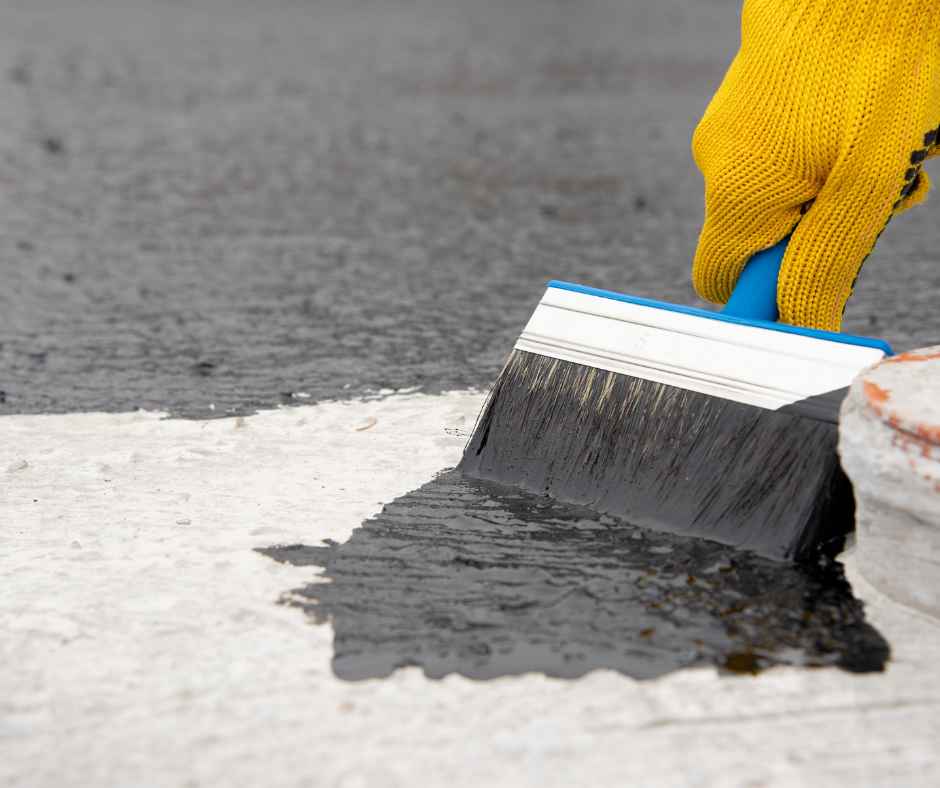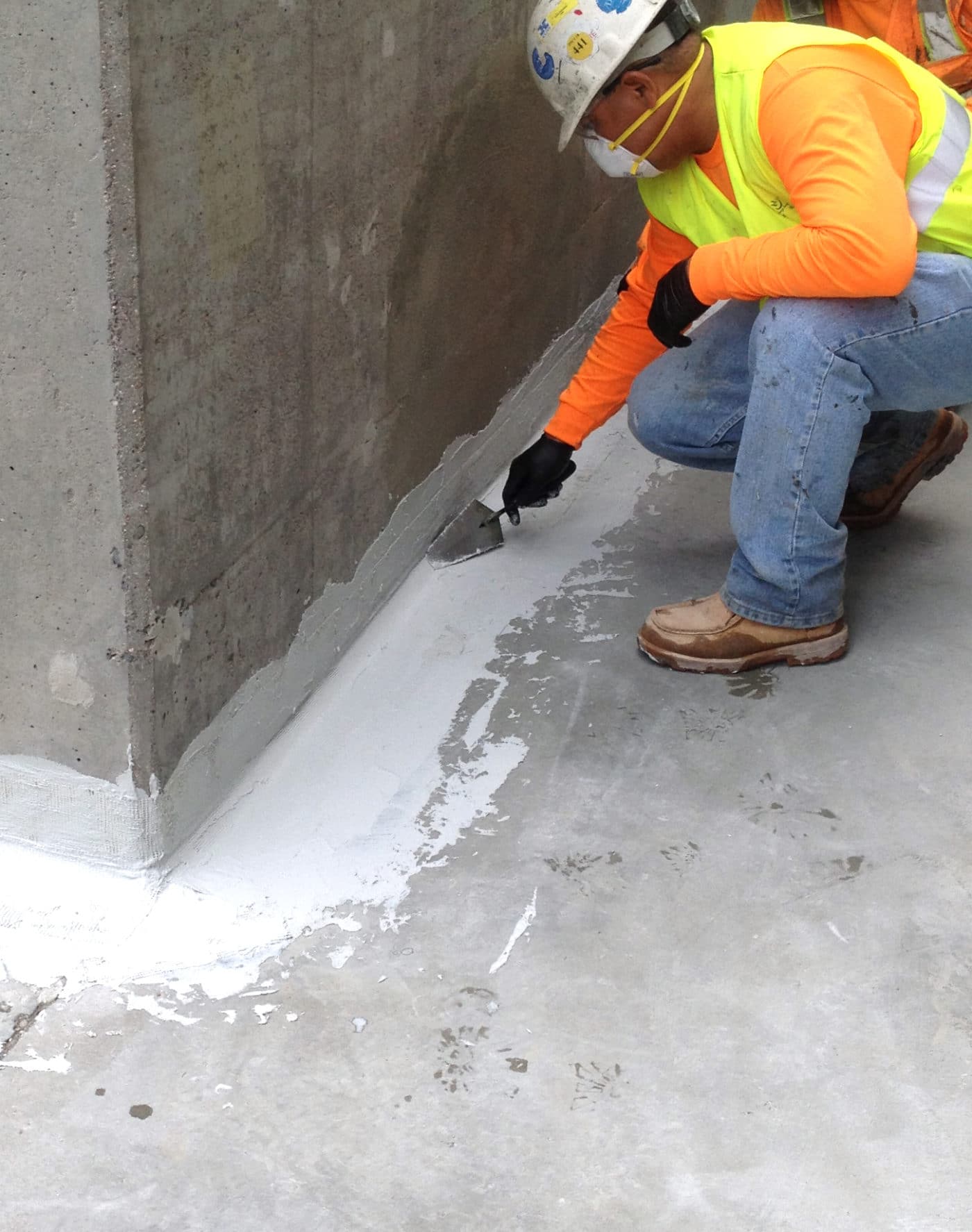Exactly How Waterproofing Works: A Detailed Check Out Methods and Technologies
Waterproofing is vital for safeguarding frameworks from moisture-related damages. It entails numerous techniques and modern technologies that produce obstacles against water intrusion. Standard methods, such as compressed clay, coexist with modern-day technologies like liquid-applied membranes. Understanding the subtleties of these strategies is vital for reliable application. The efficiency of any waterproofing remedy pivots not only on the techniques used but additionally on ongoing upkeep and evaluation. What are the essential factors that influence long-term performance?
Recognizing the Essentials of Waterproofing
Waterproofing is a vital process that safeguards structures from water intrusion, which can bring about substantial damages in time. This approach involves the application of numerous materials and techniques created to develop a barrier versus moisture. The main goal is to stop water from penetrating surface areas, which can create degeneration, mold and mildew development, and architectural instability.Various aspects influence the choice of waterproofing approach, including the kind of framework, its place, and environmental problems. Comprehending the physics of water motion and the residential properties of various materials is critical in picking an effective waterproofing solution.Effective waterproofing not only safeguards buildings but also enhances their long life and honesty. Normally, it is incorporated right into the design phase of building to ensure complete security. As understanding of water-related problems grows, the significance of comprehending waterproofing basics ends up being progressively clear to engineers, builders, and residential property owners alike.
Traditional Waterproofing Methods
Standard waterproofing methods have been used for centuries, depending on time-tested strategies and products to guard structures from water damage. One of the oldest approaches entails making use of clay, which, when compressed, creates a natural obstacle versus dampness. Additionally, bitumen, a sticky, black product originated from petroleum, has been used for its waterproof homes, commonly applied to roofs and foundations.Another technique includes the application of lime-based plasters, which offer a breathable layer that allows dampness to escape while stopping water access. Thatch roof covering, a traditional technique still seen in some societies, provides excellent waterproofing due to its securely packed straw layers.Moreover, using rock and brick has actually projected, as these products are naturally resistant to water when properly mounted. Generally, conventional waterproofing approaches highlight the relevance of selecting suitable materials and building and construction techniques to boost resilience versus water invasion.
Modern Waterproofing Technologies
Advancements in modern waterproofing innovations have actually reinvented the method structures are protected from water damages. Innovative approaches such as liquid-applied membranes and sophisticated sealants have actually boosted the effectiveness and adaptability of waterproofing options. These innovations enable seamless application, decreasing the danger of leaks and guaranteeing comprehensive coverage over intricate surfaces.Moreover, the integration of wise technologies, such as wetness sensing units and automated tracking systems, enables real-time analysis of waterproofing efficiency. This aggressive method helps with prompt maintenance and reduces lasting fixing costs.Additionally, improvements in spray-applied finishes use quick application and outstanding bond, adapting to numerous substratums while giving robust protection. Methods like polymer-modified systems even more enhance versatility and resilience, making them appropriate for diverse settings. In general, modern-day waterproofing innovations not just alleviate water intrusion however likewise add to the long life and sustainability of structures, noting a substantial change in the industry.
Products Used in Waterproofing
The performance of waterproofing remedies heavily relies on the products made use of in their application. Various products are employed to produce obstacles versus water ingress, each with one-of-a-kind residential or commercial properties fit for various atmospheres. Frequently used materials include membrane layers, layers, and sealants.Liquid-applied membrane layers, often made from polyurethane or acrylic, develop a seamless obstacle that adjusts to complicated surface areas. Sheet membrane layers, generally built from rubber or polycarbonate, offer longevity and are optimal for larger areas. Additionally, cementitious waterproofing materials, made up of cementitious substances, supply excellent attachment and flexibility.Sealants made from silicone or polyurethane are essential for joints and seams, ensuring detailed security. Advanced products, such as geo-composite membranes, combine several functions, improving efficiency. Overall, the option of waterproofing products is essential in attaining durable and efficient water resistance, customized to specific task needs and ecological conditions.
Common Applications of Waterproofing
Waterproofing plays an essential role in numerous markets, ensuring the long life and stability of structures. Typical applications consist of domestic remedies that protect homes, commercial framework that safeguards services, and industrial setups that call for robust protection against moisture. Recognizing these applications highlights the importance of waterproofing in keeping both safety and performance throughout different environments.
Residential Waterproofing Solutions
Numerous property owners encounter difficulties with dampness intrusion, making effective household waterproofing options crucial. Different techniques exist to resolve this issue, including inside and outside waterproofing systems. Inside options typically involve the application of sealants and coatings to cellar walls, which aid protect against water infiltration. Outside approaches normally include the setup of drainage systems and water resistant membranes that draw away water away from the foundation.Additionally, property owners might take into consideration sump pumps to eliminate water buildup and dehumidifiers to regulate moisture degrees. Correct grading and using seamless gutters also play an important role in managing water circulation around the home. By executing these methods, home owners can significantly reduce the threat of water damage and mold and mildew development, making sure a dry and secure living atmosphere.

Business Framework Defense
Efficient waterproofing solutions play a critical role in the security of business infrastructure. Sump pump installation & replacement Omaha. These strategies are important for guarding structures, car parking frameworks, and bridges from water damages, which can endanger structural honesty and bring about expensive repairs. Typical applications include the installment of membrane layers, coverings, and sealers that create obstacles against dampness seepage. Areas such as basements, roofings, and exterior walls are usually prioritized to ensure durability and sturdiness. In addition, waterproofing systems can improve energy efficiency by stopping water-related issues that might bring about mold and mildew growth and damage. By carrying out robust waterproofing steps, home owners can shield their investments and keep functional performance, ultimately adding to the overall sustainability of business centers
Industrial Applications Overview
While various industries face special difficulties, the requirement for reliable waterproofing solutions continues to be a continuous in industrial applications. Industries such as production, construction, and power typically encounter settings where moisture direct exposure can threaten architectural honesty and functional effectiveness. In manufacturing facilities, waterproofing is important for protecting equipment and materials from water damage. In building and construction, it safeguards foundations and cellars against groundwater infiltration. The power field counts on waterproofing for the protection of equipment in hydroelectric plants and overseas structures. Additionally, food processing markets make use of waterproofing to assure hygiene and conformity with safety standards. On the whole, reliable waterproofing remedies are necessary for enhancing sturdiness, safety and security, and productivity throughout different commercial settings.
Maintenance and Long Life of Waterproofing Solutions
Although waterproofing remedies are made to use lasting protection versus dampness breach, routine maintenance is necessary to assure their efficiency and long life - Drainage & waterproofing company Omaha. Regular assessments play a considerable duty in determining prospective problems such as fractures, peeling off, or indicators of water damage. Resolving these problems Water Solutions immediately can avoid further degeneration and pricey repairs.Additionally, cleaning up the surface of waterproofed areas helps get rid of dust and particles that can compromise the stability of the waterproofing barrier. It's also a good idea to reapply safety layers or sealants as suggested by producers to keep ideal performance. Ecological elements, such as UV exposure and extreme climate condition, can impact the life-span of waterproofing products, making normal assessment essential
Regularly Asked Questions
Can Waterproofing Be Applied in Cold Weather?
The inquiry of applying waterproofing in winter elevates worries regarding attachment and curing. Lots of products may not carry out at their ideal in reduced temperatures, necessitating cautious option and factor to consider of particular guidelines for reliable application.
The Length Of Time Does Waterproofing Usually Last?
The period of waterproofing effectiveness differs based upon products and environmental aspects. Typically, it can last from five to 10 years, yet normal upkeep and inspections are essential to ensure peak efficiency and longevity.
Is Do It Yourself Waterproofing Effective and Safe?
The performance and security of DIY waterproofing depend upon different variables, consisting of material high quality and application technique. While some people attain satisfying results, others might run into issues that endanger long-lasting protection and structural stability.
What Are the Indicators of Failing Waterproofing?
Indicators of failing waterproofing consist of noticeable water spots, peeling off paint, mold and mildew development, stuffy smells, and dampness in walls or ceilings - Yard drainage Omaha. These indicators suggest jeopardized barriers, necessitating prompt inspection and potential remediation to stop more damage
Exactly how Do I Pick the Right Waterproofing Specialist?

Choosing the appropriate waterproofing contractor involves investigating credentials, reading reviews, comparing estimates, and reviewing experience. A qualified specialist needs to supply a detailed strategy, make use of top quality materials, and offer service warranties to assure reliable waterproofing services.